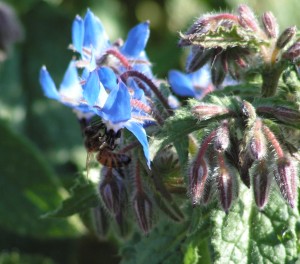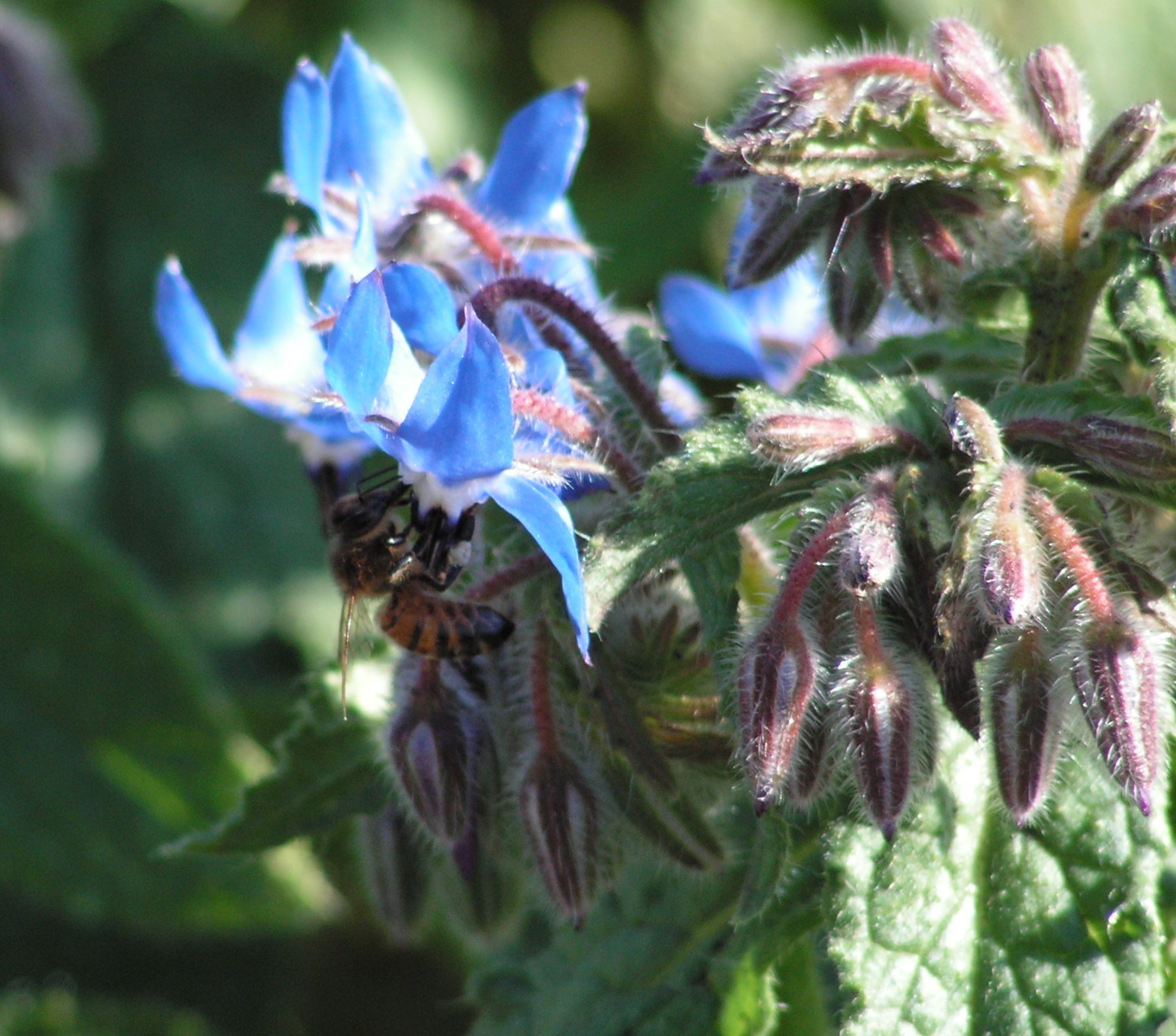 If you are not acquainted with borage, it’s time you met. Particularly if you are at all interested in growing healthy thriving vegetables.
If you are not acquainted with borage, it’s time you met. Particularly if you are at all interested in growing healthy thriving vegetables.
Borage is a super healer in the garden. Warding off pests like cabbage worms and moths, adding vigor and strength to tomatoes, and acting as a slug and snail trap with its hairy leaves, borage is truly one of the Wunder-Kind plants.
A self-seeding annual in cold climates and/or overwintering semi-perennial in warmer ones, this lovely blue-blossomed beauty is a true worker bee. It is, in fact, the top rated honey bee attractor plant at the Melissa Garden in Healdsburg, California, a renowned honeybee sanctuary.
There is no plant that has anything other than beneficial relations with borage, so you can plant it anywhere and everywhere in the garden, and we highly recommend that you do.
The leaves and blue blossoms are edible. The leaves are compost activators and also great chicken feed. The plant packs a punch in vitamins A and C and trace minerals and is generally similar to dandelion in its nutritional value.
When feeding to chickens, let wilt a day to let the ‘hairs’ relax and not be so prickly. When preparing borage for your own culinary consumption, sauté’ or steam the leaves and they become very much like a spinach.
Easily grown from seed and a prolific reproducer on its own once gone to flower, the only sticky wicket with borage is that transplanting out of a pot and into the garden will usually kill it – it is VERY sensitive to root disturbance.
So grow it in the greenhouse pre-season in peat or paper pots which can go right into the garden without disturbing the roots and then as soon as it is warm enough, watch the bees gather ’round it’s lovely blue blossoms. Borage will bloom for three or four months running, making it a sustained long blooming attractor while other flowering plants come and go in the meantime.
No matter how you grow it, or where, borage will bring multitudes of benefit to your vegetable garden.
Resources:
http://www.rootsimple.com/2011/03/borage-its-whats-for-dinner.html


